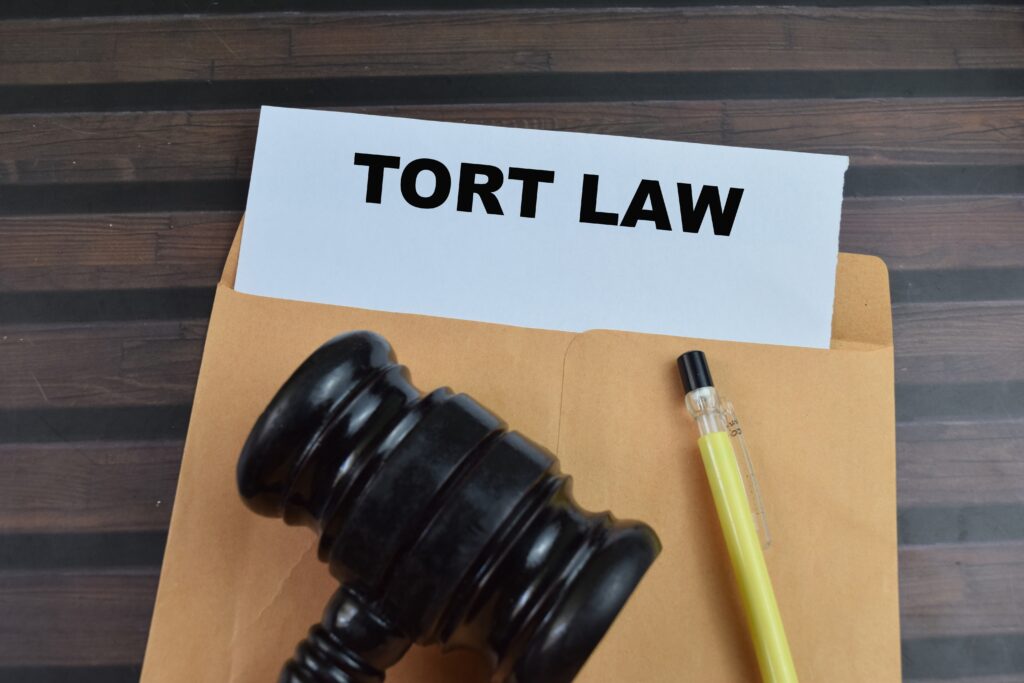The consequences extend far beyond the initial physical pain. They can manifest as chronic health conditions, create significant financial strain due to lost income, and lead to lasting psychological challenges. These effects are not always obvious in the days following a collision, sometimes taking weeks or even months to fully appear.
In Alberta, the path to receiving support is governed by specific rules, like the Insurance Act and the Minor Injury Regulation. These regulations can be difficult to understand while you are focused on healing. An insurer might classify your injury as “minor,” which could limit the compensation you receive for your pain and suffering, even if the effects feel anything but minor to you.
You do not have to figure this out on your own. It’s good to be aware of the potential long-term consequences, but managing the legal and insurance requirements is our role. An experienced Alberta car accident lawyer at MNH Injury Lawyers can handle the complexities of your claim so you can concentrate on your recovery.
If you are worried about the long-term impact of your injuries, call MNH Injury Lawyers for a straightforward conversation about your situation at (888) 664-5298.
GET YOUR FREE CONSULTATION NOW!
When “Minor” Injuries Become Major Problems
Many serious, long-term injuries begin with symptoms that seem manageable. After a crash, your body is flooded with adrenaline, a hormone that effectively hides pain for hours or even days. This is why you should never underestimate your initial injuries or dismiss them as something that will simply “go away.”
Soft Tissue Injuries (Sprains, Strains, and Whiplash): The “Invisible” Injury

One of the most misunderstood injuries is whiplash, also known as a whiplash-associated disorder (WAD). This is an injury to the soft tissues of the neck—muscles, ligaments, and tendons—caused by a forceful, rapid back-and-forth movement. While sometimes dismissed, these injuries can lead to chronic pain, persistent headaches, stiffness, and reduced mobility that lasts for years.
This is where Alberta’s laws become particularly important to your case.
The Minor Injury Regulation (MIR) is a rule that places a limit, or “cap,” on the amount of money you can receive for pain and suffering damages if your injury is defined as a “minor” sprain, strain, or WAD. In simple terms, it’s a cap on compensation for intangible losses like pain and emotional distress for certain types of injuries.
An insurance company for the at-fault driver may try to classify your injury as minor to limit their payout. However, the definition of “minor” is not as simple as it sounds. The question is whether the injury results in a “serious impairment” to your life. This involves a careful medical and legal assessment of how the injury affects your ability to perform your job and your normal daily activities. We help determine if the cap applies to your situation.
The Three Pillars of Long-Term Harm
1. The Physical Toll
While cuts and broken bones are obvious, some of the most life-altering physical injuries are not immediately visible.
- Traumatic Brain Injuries (TBI): A traumatic brain injury can range from a seemingly mild concussion to a severe, penetrating injury. Symptoms like headaches, dizziness, or confusion may appear right away, but the long-term effects can be subtle and develop over time. These may include persistent headaches, memory problems, personality changes, chronic fatigue, and even an increased risk for future neurological conditions. The term “mild” TBI is misleading, as the long-term consequences are sometimes anything but mild.
- Spinal Cord Injuries: An injury to the spinal cord permanently alters your life. Depending on the location and severity of the damage, it can lead to chronic pain, loss of sensation or movement, and breathing difficulties. Over time, individuals may also face secondary complications like pressure ulcers, respiratory issues, and bladder dysfunction.
- Chronic Pain: Sometimes, the body’s pain signals don’t turn off after an injury has healed. Acute pain from the accident can develop into a chronic condition that lasts for months or even years. This persistent pain disrupts sleep, affects your mood, and makes it difficult, if not impossible, to work or enjoy the activities you once loved.
2. The Financial Fallout
A serious injury destabilizes your financial security. The costs are not just about the immediate bills but about the long-term ripple effects on your ability to earn a living.
Loss of Income & Earning Capacity
This goes far beyond the initial time you take off work to recover. A long-term injury could even prevent you from returning to your previous job. It might force you into a less demanding, and lower-paying, line of work. It could also eliminate opportunities for promotions or career advancement that you otherwise would have achieved. This loss of future potential is a real, compensable loss.
Navigating Your Insurance Policy: Section B Benefits
In Alberta, every car insurance policy is governed by a standard contract, the Alberta Standard Automobile Policy (S.P.F. No. 1). Within this policy, you will find what are known as Section B Benefits.
In simple terms, Section B benefits are “no-fault benefits.” They are your first line of support for immediate needs, and they are available to you regardless of who was at fault for the accident.
For disability, Section B provides a significant, but limited, safety net:
- It covers 80% of your gross weekly income.
- This coverage is capped at a maximum of $600 per week.
- There is a 7-day waiting period, meaning no disability benefits are paid for the first week you are unable to work.
The gap is immediately apparent. For many Albertans, $600 a week is nowhere near enough to cover their mortgage, bills, and family expenses. Furthermore, these benefits typically last for a maximum of two years, while a serious injury may impact your ability to work for a lifetime.
C. The Psychological Scars
The trauma of a violent collision does not always end when the physical wounds heal. The psychological impact can be just as debilitating and long-lasting.
- Post-Traumatic Stress Disorder (PTSD), Anxiety, and Depression: These are not signs of weakness; they are real, diagnosable medical conditions that some victims develop after a car accident. In fact, motor vehicle accidents are a leading cause of PTSD in the general population. Symptoms can include flashbacks, severe anxiety, nightmares, and a persistent feeling of sadness or hopelessness.
Psychological conditions that are a direct result of the physical crash or the pain and disability it causes are considered part of your overall injury claim.
Securing Your Future: How Compensation Works in Alberta
When you are injured, there are two distinct paths to receiving financial support. It is important to understand both, as they serve different purposes and cover different losses.
Path 1: Section B No-Fault Benefits (Your Insurer)
As we mentioned above, these benefits come from your own insurance policy. They are designed to provide immediate, though limited, support for medical treatments not covered by Alberta Health and a portion of your lost income. This is your first stop for financial assistance.
Path 2: The Tort Claim (Against the At-Fault Driver)

This is a legal claim, which may become a lawsuit, brought against the driver who caused the accident. The goal of a tort claim is to recover the losses that are not covered by your Section B benefits. A successful claim provides compensation for the full, long-term impact of the injury on your life.
We pursue several main categories of compensation, known as “heads of damages”:
- Pain and Suffering (General Damages): This is compensation for the non-financial losses you have endured. It acknowledges the physical pain, emotional distress, and the loss of enjoyment of life that your injury has caused. This is the category of damages that may be limited by the Minor Injury Regulation if your injury is deemed a “minor” one.
- Loss of Income (Past and Future): This compensates you for the full extent of your lost earnings. It covers the income you have already lost and, crucially, the income you will lose in the future because of your diminished earning capacity. This is the difference between the life you would have had and the one you now face.
- Cost of Future Care: This covers the anticipated costs for treatments, medication, and personal assistance that you will need for the rest of your life. These are expenses that are not covered by Alberta Health Care but are necessary for you to manage your condition and maintain your quality of life.
You Focus on Healing. We’ll Handle the Rest.
The period after a serious injury is not the time to become an authority on insurance law or medical documentation. Your energy must be directed toward one thing: your recovery. Our role is to manage the complex process of proving the full extent of your injuries and securing the resources you need for your future.
Our role in this process involves:
- Working with medical and vocational specialists to document the full scope of your injuries and, most importantly, how they will impact your future health and career.
- Gathering the necessary medical and functional evidence to demonstrate that an injury is not “minor” and has, in fact, resulted in a serious impairment to your life.
- Handling all communication, negotiation, and correspondence with the insurance companies, ensuring that the complex rules of the Insurance Act are followed to the letter, and your rights are protected.
Frequently Asked Questions about Long-Term Car Accident Injuries
This is a very common scenario. The symptoms for injuries like whiplash and concussions can be delayed or can worsen over time. Continue seeking medical attention to create a clear record of your symptoms and their progression. Your claim is flexible; even if an initial assessment was made, new or worsening symptoms allow us to make adjustments.
No. The cap only applies to one specific type of compensation: damages for pain and suffering for injuries that are legally defined as “minor.” It does not limit your ability to claim the full amount of your lost income, future care costs, or other out-of-pocket expenses.
Proof typically involves a combination of evidence. This includes detailed medical records from your doctors and specialists, expert reports from medical and vocational assessors who evaluate your condition and its impact on your life, and personal testimony from you, your family, and your colleagues about how the injury has affected your daily activities and ability to work.
Yes. Psychological injuries that are diagnosed by a medical professional and are a result of the accident are recognized as real and compensable injuries in Alberta. If a condition like PTSD or depression arises from the trauma of the collision itself, it can be the main basis of a claim.
Reclaim Your Future with MNH Injury Lawyers
You do not have to accept that your life has been permanently diminished by someone else’s actions. An experienced Alberta personal injury lawyer can help you pursue the justice and compensation you deserve.
Let us take on the burden of the legal process. Call MNH Injury Lawyers today at (888) 664-5298 for a free, no-obligation discussion on how we help protect your future.
